Introduction
When you think of famous japanese desserts, images of mochi, matcha-inspired pastries, and adorable fish-shaped cakes may come to mind. Beyond these beloved icons, Japan’s dessert culture boasts a vast panorama of flavors and textures—from the subtle sweetness of wagashi to the innovative brilliance of modern patisseries. What is Japan’s most popular dessert? Some might point to mochi, while others champion dorayaki or ultra-fluffy soufflé pancakes. What is the national sweet of Japan? The answer often centers around wagashi, anko (sweet bean paste) confections, and delicacies deeply rooted in centuries-old tea ceremonies.
This article offers an expansive tour through Japan’s sweet realm, incorporating responses to what is the Japanese dessert like ice cream? (hint: kakigori or mochi ice cream) and what is a popular dessert in Tokyo? (soufflé pancakes or matcha parfaits lead the pack). At the same time, we’ll examine how these treats manage to be both culturally significant and undeniably tasty. Whether you’re a curious home cook or a dessert aficionado, discovering famous japanese desserts can enrich your culinary adventures.
If you’d like a hands-on approach to mastering these confections, visit our Traditional Japanese Desserts Recipe for easy instructions on creating mochi, anko, and beyond. Get ready to immerse yourself in a dynamic sweet culture that unites tradition, seasonal awareness, and a passion for creative innovation.
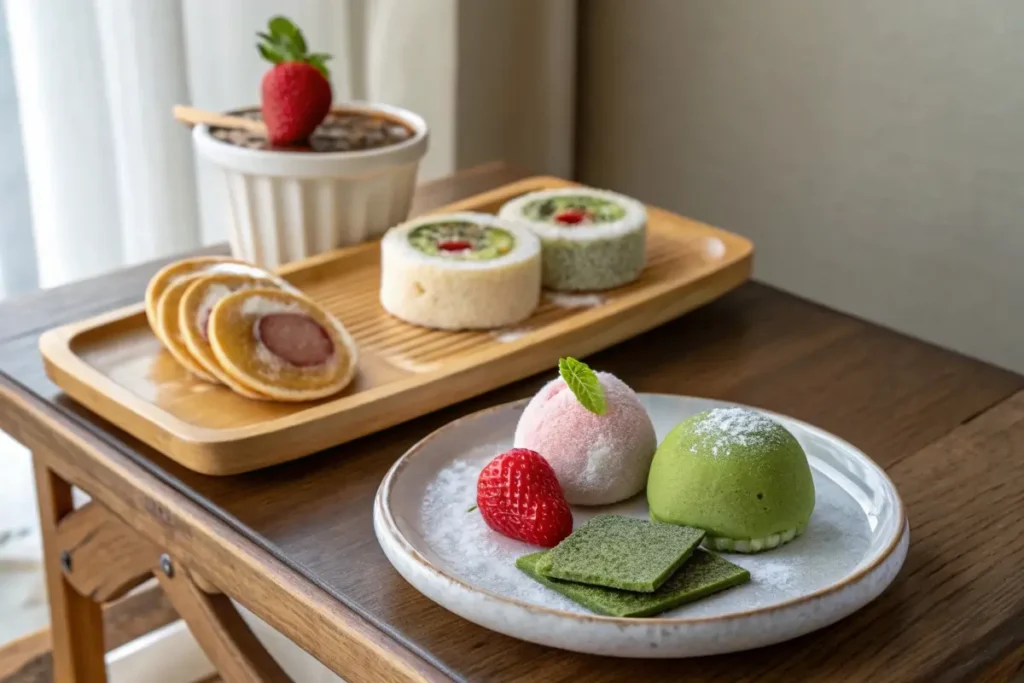
1. Understanding the Landscape of Famous Japanese Desserts
1.1 Traditional vs. Modern
Japanese desserts are broadly categorized into:
- Wagashi (Traditional Sweets): Often made from azuki beans, rice flour, and natural sweeteners. Examples include daifuku, taiyaki, and yokan. Wagashi emphasize seasonality and minimal refined sugar, deriving flavor from simple, high-quality ingredients.
- Western-Influenced Patisseries (Yōgashi): Cheesecakes, roll cakes, and pastries adapted to Japanese preferences, typically featuring milder sweetness and airy textures.
This dualism shapes the dessert scene: you’ll find mochi shops dating back centuries next to modern cafés offering flamboyant matcha parfaits or Instagram-worthy soufflé pancakes. Each approach to sweet-making resonates with the cultural trait of balance—where aesthetics, taste, and portion are carefully orchestrated.
1.2 Seasonal Emphasis
In Japan, famous japanese desserts frequently incorporate seasonal produce: sakura mochi in spring, kaki (persimmon) or kuri (chestnut) sweets in autumn, and mandarin orange jellies in winter. Cherry blossom–themed treats flourish during hanami (flower-viewing) season, adding pink-hued mochi or sakura-infused jellies to menus. Autumn’s chestnut desserts, like Mont Blanc or kuri manju, highlight the warmth and sweetness of harvest time. This seasonal synergy resonates strongly with Japanese culture, demonstrating an appreciation for nature’s cycles.
1.3 Less Sugar, More Subtlety
Many travelers notice that famous japanese desserts aren’t as sugary as typical Western pastries. Wagashi, in particular, emphasize natural sweetness and delicate flavors. Even Western-inspired sweets—like the airy Japanese cheesecake—use less sugar, giving them a unique lightness. Rather than saturating doughs in syrup, Japanese confectioners highlight nuanced tastes, occasionally pairing desserts with bitter teas to offset mild sweetness.
1.4 Popular Ingredients
- Azuki Beans (Red Bean Paste, Anko): Used in mochi, dorayaki, taiyaki, and anpan (bean-jam bread).
- Matcha (Green Tea Powder): Infuses cakes, cookies, soft-serve ice creams, and pudding with an earthy, slightly bitter note.
- Mochiko (Glutinous Rice Flour): The key to mochi’s chewiness, used in daifuku, dango, and various festival sweets.
- Agar (Kanten): Derived from seaweed, forming firmer jellies like yokan or mizu yokan.
1.5 Where to Find Them
You’ll spot famous japanese desserts in:
- Confectionery Shops: Often specializing in either wagashi or Western pastries.
- Convenience Stores (Conbini): Stocking single-serving cakes, puddings (like purin), and mochi-based items at budget-friendly prices.
- Tea Houses and Ryokan: Serving artisanal wagashi alongside matcha tea, an experience steeped in tradition.
Want to see how vegetables seamlessly appear in sweet recipes? Explore our Vegetables Japanese Recipe for savory inspirations that might also inform your sweet creations (like sweet potato or kabocha desserts). This fusion of seasonal produce, mild sweetening, and mindful portioning distills what defines famous japanese desserts: a blend of cultural tradition, innovative flair, and well-balanced taste.
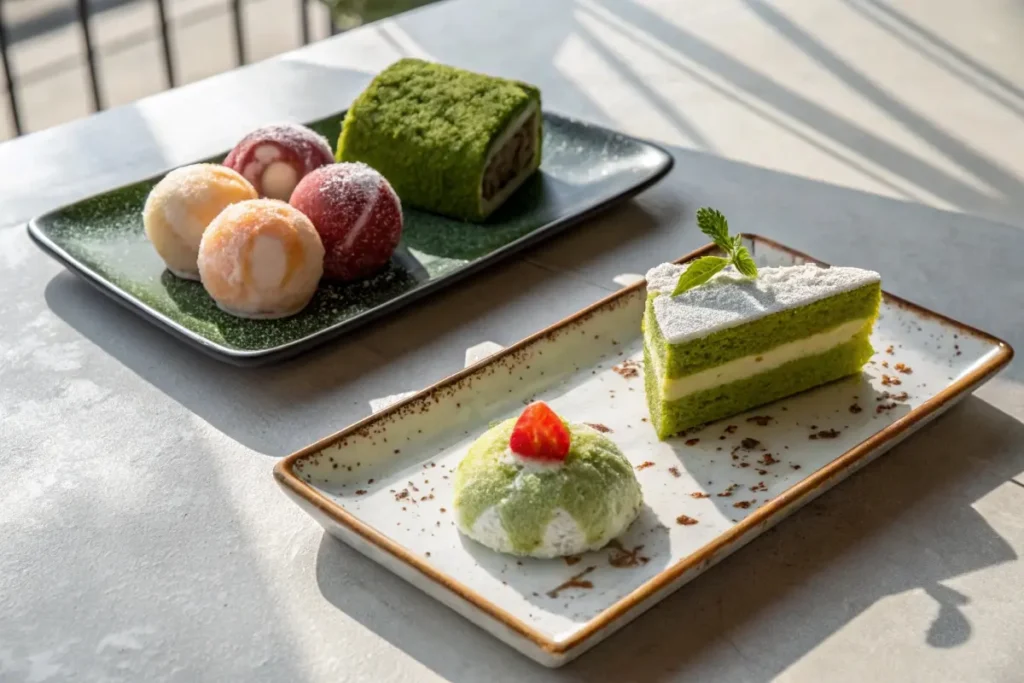
2. Famous Japanese Desserts: Must-Try Varieties
2.1 Mochi-Centric Treats
Daifuku (大福): A bite-sized mochi shell, typically stuffed with anko (sweet bean paste). Some versions include ichigo daifuku—a fresh strawberry nestled inside anko for a sweet-tart contrast. Daifuku’s pillowy chew and mild sweetness make it a perennial favorite.
Dango (団子): Skewered dumplings of rice flour, often basted in soy sauce–based syrup (mitarashi dango) or rolled in sweetened kinako (soybean flour). Dango emerges in festivals and tea shops, representing a simple yet widely loved staple.
2.2 Iconic Bean Paste Sweets
Dorayaki (どら焼き): Two fluffy pancakes sandwiching a layer of anko. Symbolic in pop culture (famously loved by the Doraemon character), dorayaki ranges from classic anko to creative fillings like custard or matcha cream.
Taiyaki (たい焼き): A fish-shaped waffle pastry stuffed with anko, custard, or chocolate. Street vendors crisp them up for a warm snack. Some modern shops incorporate sweet potato or seasonal fruit fillings.
2.3 Matcha-Based Desserts
Matcha Roll Cake: A sponge swirl laced with matcha, featuring whipped cream or azuki paste. The earthy note of matcha meets sweetness in perfect harmony.
Matcha Parfait: Typically layered with cornflakes for crunch, matcha ice cream, sweet beans, mochi balls, and whipped cream. This layered dessert is a cafe staple, offering contrasting textures in each spoonful.
2.4 Custards and Jellies
Purin (プリン): Resembling flan, purin has a firmer, jiggly texture often crowned with caramel sauce. Sold in convenience stores or homemade in kitchens, it’s ubiquitous and beloved.
Mizu Yokan: A translucent jelly (based on agar) combining sweet bean paste and water. Refreshing in summer, it showcases wagashi’s hallmark subtlety. Some variants add chestnut chunks or matcha flavoring.
2.5 Frozen and Cold Desserts
Kakigori (かき氷): Shaved ice drenched in syrups—like strawberry, matcha, or lemon—and sometimes topped with condensed milk or anko. This staple of summer fairs and festivals gives the satisfaction of ice cream with fewer calories.
Mochi Ice Cream: Bites of ice cream encased in a thin mochi shell. The mochi locks in the ice cream’s cold, creamy texture. Flavors range from matcha or black sesame to tropical fruits.
2.6 Tokyo Specialties
Soufflé Pancakes: Tokyo’s iconic fluffy, jiggly pancakes soared to fame on social media. Unlike traditional American pancakes, these rely on whipped egg whites, delivering an airy sweetness with minimal sugar.
Crepes: Imported from France but perfected in Harajuku’s street stalls, where you can find sweet fillings ranging from strawberries with whipped cream to green tea gelato and azuki beans. A portable, photogenic treat popular among tourists.
If you’re keen on simpler methods, see our Japanese Dessert Recipes, including easy steps for mochi or a fuss-free matcha pudding. By understanding the fundamentals—be it mochi dough or whipped cream technique—you’ll replicate many famous japanese desserts at home, delighting friends and family with unique, Instagram-worthy confections.
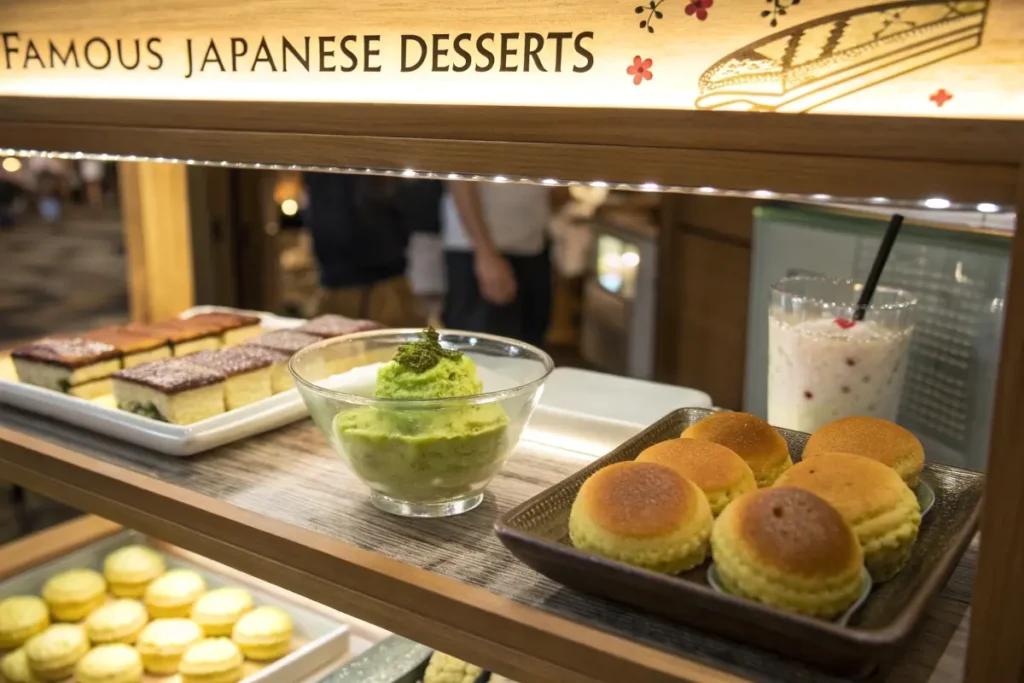
3. History and Background of Famous Japanese Desserts
3.1 Ancient Times and Rice Flour Foundations
Rice cultivation shaped early Japan, making mochi (pounded glutinous rice) a ceremonial staple. Sweets mainly derived sweetness from fruits, honey, or minimal sugar. Religious events and harvest festivals spurred the creation of rudimentary desserts—like simple mochi offerings—suffused with symbolic meaning (prosperity, health, etc.).
3.2 Edo Period: Sugar Becomes Accessible
During the Edo period (1603–1868), sugar import grew, fueling wagashi evolution. Confectioners near Edo (Tokyo) and Kyoto pioneered new techniques:
- Refined Azuki Paste: High-quality bean paste replaced older, chunkier versions, leading to smoother daifuku and dorayaki.
- Yokan Blocks: Agar-based jellies emerged as a shelf-stable sweet, perfect for traveling samurai or merchants.
Merchants and townsfolk embraced these confections, forging a sweet culture accessible beyond aristocrats. Tea ceremonies also factored in, as matcha tea required a small sweet to complement its bitterness.
3.3 Meiji to Showa Eras: Western Influence
With the Meiji Restoration (1868), Western pastries arrived. Over time, local bakers hybridized them with Japanese tastes:
- Castella Cake (Kasutera): Introduced by Portuguese missionaries earlier, further refined in Nagasaki with local sugar and flour.
- Cheesecakes: Inspired by Western recipes, but lighter and fluffier.
- Puddings (Purin): Flan-like sweets adapted to milder sugar. Soon became a household dessert.
By the Showa era (1926–1989), convenience stores sold small pastries at budget-friendly prices, while pastry schools produced patisserie masters skilled in both wagashi and Western styles.
3.4 Contemporary Innovations
Modern Japan sees dessert fads erupt quickly—like matcha tiramisu or ultra-luxe parfaits layered with fresh fruit, gold leaf, or mochi cubes. Chefs also focus on local produce—strawberries, peaches, sweet potatoes—to ensure each dessert resonates with Japan’s farm-fresh ethos. Tokyo especially fosters creativity, with cat cafés serving dorayaki or mochi donuts, and themed pastry shops selling character-inspired treats.
Global Impact: As travel and social media soared, famous japanese desserts like soufflé pancakes or mochi ice cream exploded internationally. Today, you’ll find them in mainstream grocery aisles worldwide or see them trending on food blogs. This global presence reaffirms Japan’s ability to fuse age-old traditions with contemporary tastes, forging new waves in dessert culture.
Want to see how other Japanese staple dishes also have storied transformations over time? Check out our Japanese Curry Recipe One Piece for a look at how pop culture influences beloved national dishes. The path of famous japanese desserts shares a similar adaptability—forever weaving tradition, popular demand, and creative new ideas into an ever-evolving sweet tapestry.
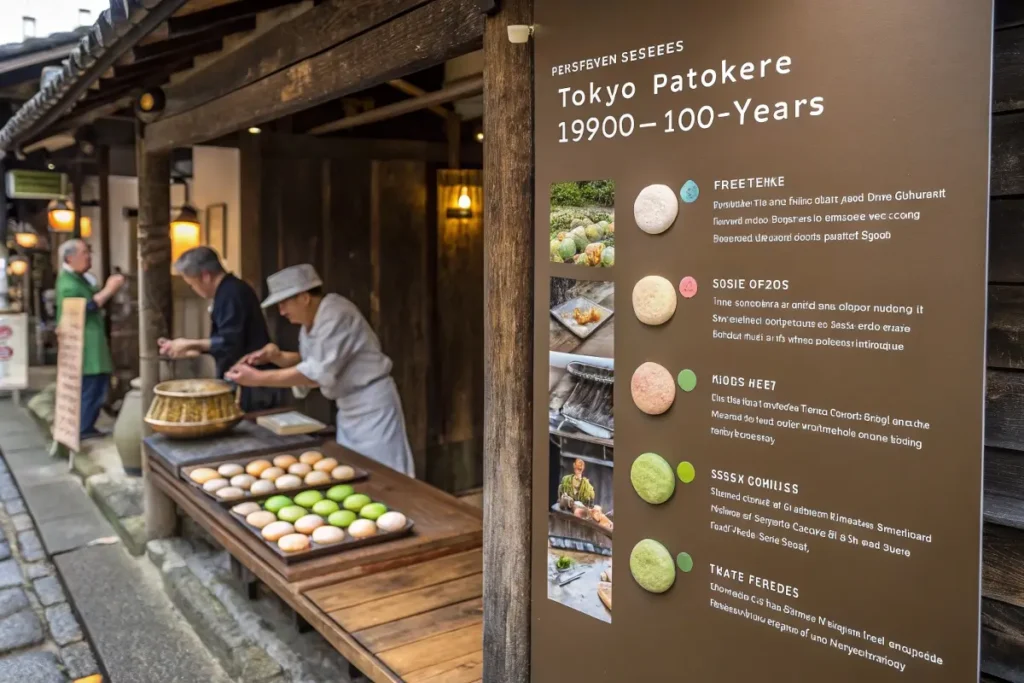
4. Practical Examples/Use Cases
4.1 Home Dessert Party
Scenario: You’re hosting a Japanese-themed dinner.
- Approach: Serve small plates of daifuku mochi with fresh strawberry filling, a mini matcha roll cake, and a scoop of mochi ice cream for variety.
- Outcome: Guests appreciate the sampling approach—multiple desserts in petite servings—mirroring Japan’s portion etiquette and diverse flavors.
4.2 Cafe Innovations
Scenario: A local cafe aims to introduce famous japanese desserts on its menu.
- Approach: Add a dorayaki with seasonal fruit jam, matcha cheesecake, and a unique taiyaki waffle stuffed with a rotating flavor (e.g., sweet potato or caramel anko).
- Benefit: These items attract adventurous foodies, boosting social media interest and broadening the cafe’s identity.
4.3 Cultural Festivals or Events
Scenario: A Japanese cultural day at a community center.
- Approach: Offer mochi-pounding demonstrations (kagami mochi), showcase kakigori shaved ice with toppings, or let visitors sample various wagashi.
- Result: Attendees gain hands-on appreciation of dessert-making, forging deeper links to Japanese cultural heritage.
4.4 Tourist Experiences
Scenario: Visiting Tokyo for a few days.
- Approach: Stop by a top-tier patisserie in Shibuya for the famed soufflé pancakes, then explore a traditional wagashi shop in Asakusa for fresh dorayaki or taiyaki.
- Upshot: You collect contrasting sweet memories—modern Instagrammable creations plus the refined simplicity of historical confections.
For savory-lovers who also enjoy sweet notes, consider referencing our Japanese Chicken Fried Rice Recipe as a complement to these desserts. Balancing a savory main with a mild-sweet dessert underscores Japanese cuisine’s harmonious approach to meals. Ultimately, whether for personal enjoyment, business endeavors, or cultural events, famous japanese desserts suit varied contexts—uniting people over universal joys of sweetness, artistry, and tradition.
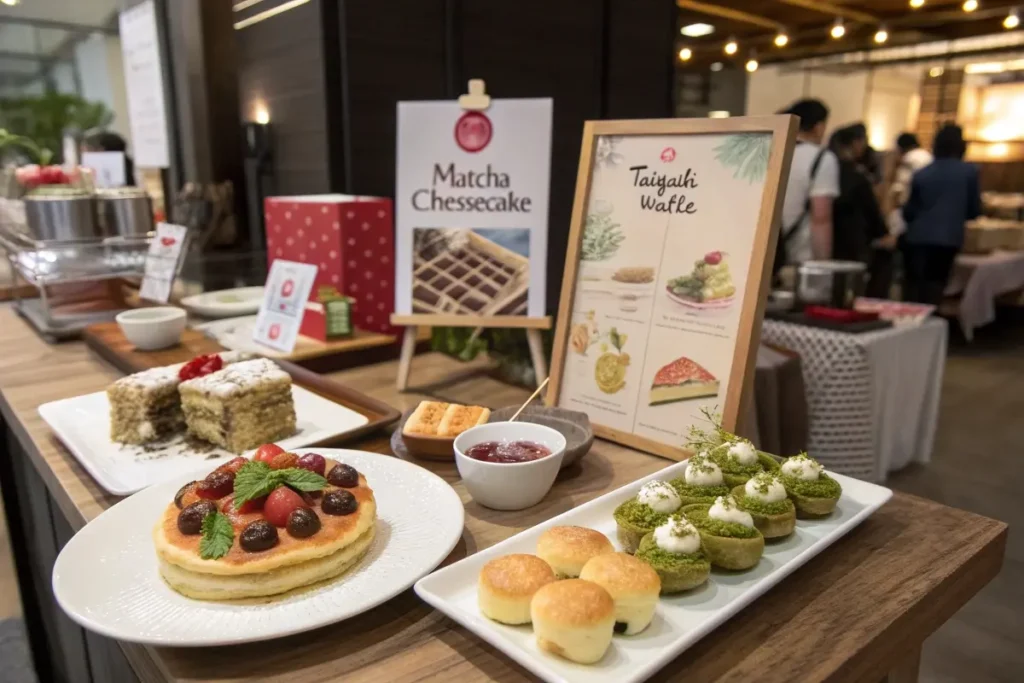
5. FAQs
5.1 What is Japan’s most popular dessert?
Mochi and matcha sweets consistently rank high, but preferences can vary. Taiyaki, dorayaki, and soufflé pancakes are also heavy hitters. Seasonal favorites might outshine year-round options when they’re in peak. Overall, daifuku mochi remains iconic, plus the wide popularity of purin in convenience stores.
5.2 What is the national sweet of Japan?
There’s no official “national sweet,” but many people consider wagashi as emblematic of Japanese dessert culture. Wagashi like mochi or yokan reflect deep historical ties, minimal sugar, and an artistic ethos central to Japanese tradition.
5.3 What is the Japanese dessert like ice cream?
You might be referring to mochi ice cream—ice cream balls wrapped in thin mochi. Another popular item is kakigori (shaved ice), though not exactly ice cream, it is a refreshing summertime treat. Also, soft-serve in flavors like matcha or sakura adds an ice cream–like experience.
5.4 What is a popular dessert in Tokyo?
Soufflé pancakes skyrocketed to fame. Tokyo also embraces endless variations of matcha parfaits, mochi donuts, and fruit-laden crepes. Constantly evolving trends ensure that certain shops or neighborhoods specialize in unique sweet offerings, making Tokyo a dessert destination.
5.5 Are Japanese desserts typically low in sugar?
Yes, many traditional desserts are less sugary than Western counterparts, relying on natural flavors from beans or fruit. Modern pastries still may contain sugar, but portion sizes tend to be smaller, and sweetness is often more subtle.
5.6 Where can I learn to make these desserts?
You can explore our Japanese Dessert Recipes for step-by-step guidance on mochi, matcha cakes, dorayaki, and more. Culinary schools or local Japanese community workshops also offer classes on wagashi techniques.
5.7 Which dessert suits a beginner?
Dorayaki or mochi are relatively simple to attempt at home—requiring pancake making or kneading mochi dough. For mochi, be mindful of the sticky texture. Matcha roll cakes require a bit more skill with sponge rolling but remain an approachable first step into Japanese patisserie.
Conclusion
From daifuku mochi and dorayaki to sensational soufflé pancakes, famous japanese desserts traverse a rich tapestry of tastes and textures. Rooted in centuries of refined wagashi traditions, contemporary innovations merge time-honored ingredients—azuki beans, matcha, glutinous rice—with Western-inspired pastry techniques. The result is a dessert universe where minimal sugar, artistic shapes, and seasonality reign supreme.
If you’re curious to try them yourself, begin with mochi or a simple matcha sponge cake. Feeling bolder? Attempt making your own dorayaki or sculpting nerikiri wagashi—an advanced skill that marries sweet bean paste and imagination. For deeper explorations, check our Traditional Japanese Desserts Recipe index, brimming with how-tos and tips.
In essence, Japanese dessert culture remains a harmony of old and new: from centuries-old tea ceremony confections to cutting-edge Tokyo pastry shops. Each sweet presents a mindful blend of flavors and visual poetry—reminding us that dessert can be more than indulgence; it can be an experience in artistry, tradition, and culinary curiosity. So why not embark on your own sweet adventure with famous japanese desserts—expanding your palate while indulging in Japan’s gentle spirit of gastronomic delight?
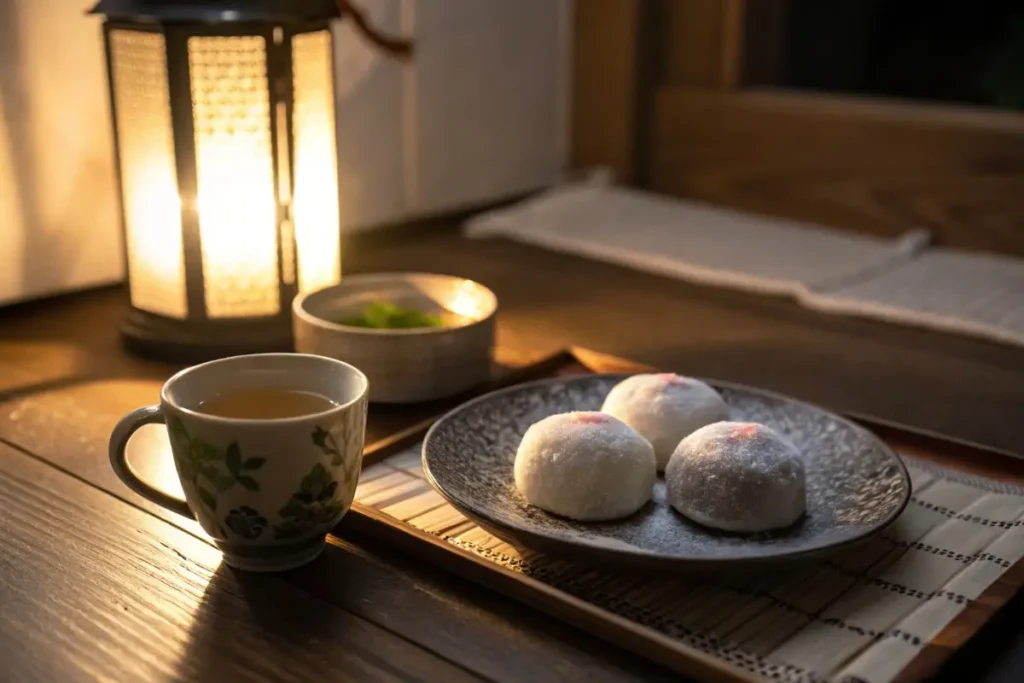
SEO Metadata
Title (50-60 characters):
Famous Japanese Desserts: Traditional Sweets & Modern Pastries
Meta Description (120-140 characters):
Explore famous japanese desserts. Learn about mochi, matcha treats, Tokyo pastries, and wagashi traditions. Satisfy your sweet craving!
Primary Keyword:
Keyphrase Synonyms:
Slug:
7 SEO Tags
8 SEO-Relevant Tags
- famous japanese desserts
- what is Japan’s most popular dessert
- what is the national sweet of Japan
- what is the Japanese dessert like ice cream
- what is a popular dessert in Tokyo
- popular japanese desserts
- mochi-based sweets
- matcha desserts
